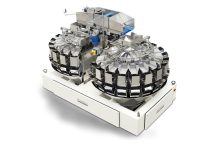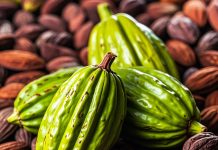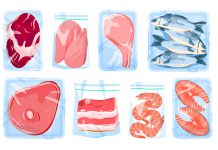 New technology for the production of yeast-free pizza.
New technology for the production of yeast-free pizza.
Pizza is a bakery product consisting mainly of water, flour, salt and yeast. The latter is a bio-chemical blowing agent that releases carbon dioxide as a product of a fermentation reaction during the proofing step. The leavening is a rather slow process that may take up to several hours, depending on yeast concentration and external conditions of temperature and relative humidity.
In this context, the aim of a recent study, carried out by a group of Italian researchers (Avallone et al., 2022), was to develop an innovative technology to produce yeast-free pizza, making use of a gaseous blowing agent (carbon dioxide or helium) and a pressurized oven. The evolution of the viscoelastic moduli of the dough at cooking temperatures has made it possible to define the time window for agent absorption under pressure and the depressurization stage to allow bubbles formation and growth.
It has also been observed that 6 bar and 145°C were required to bake and foam the product in 4 minutes. The authors point out that the proposed technology makes it possible to obtain a well-foamed pizza with densities and morphologies similar to the ones of a traditional dough with yeast. Finally, the process parameters (i.e. temperature, maximum pressure, time at constant pressure, pressurization and depressurization speeds) can be easily varied to modulate the latter characteristics, depending on the quality required for the final product.
Quality evaluation of gluten-free pizza made from legume flour.
Celiac disease is one of the autoimmune genetic disorders triggered by the ingestion of gluten that affects mucosal damage of the small intestine. The only treatment for CD is lifelong strict adherence to a gluten-free (GF) diet. Therefore, a recent study, carried out by a team of Indian researchers (Kumar et a., 2022), focused on the formulation and processing of gluten-free variants of pizza base using different legume flours (chickpeas [BNG], black Indian beans [BLG], soya bean [SB] and fenugreek seeds [FS]).
In particular, a variant was prepared by blending these grains (BNG, BLG, SB and FS) at 33:33:33:1 ratio. The results show that the samples thus prepared have lower water-absorbency, viscosity, development time and dough stability than the control values (based on wheat flour). It was also noted that the latter have lower hardness and gumminess compared to gluten-free dough.
The introduction into the formulation of a blend of additional components (CA: Guar gum+glycerol monostearate+stearoyl sodium lactylate+fungal alpha-amylase) significantly improves the rheological, structural, physical and sensory properties of the gluten-free pizza base. In conclusion, the authors point out that the resulting product not only has a lower digestibility of starch in vitro, but also has a significantly higher protein and dietary fiber content compared to the values measured in the conventional wheat flour product.
References
P.R. Avallone et al., Physics of Fluids, 34, 2022, 033109; Kumar et al., Journal of Food Processing and Preservation, 46, 2022, e16239.



